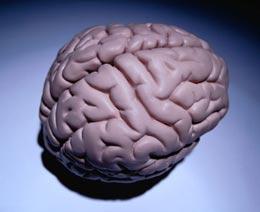How we judge the thoughts of others
Brain division could help explain stereotyping, religious conflict and racism.
 What are you thinking? We use different bits of our brain to think of ourselves and people 'not like us'.
What are you thinking? We use different bits of our brain to think of ourselves and people 'not like us'.How do we know what another person is thinking? New research suggests we use the same brain region that we do when thinking about ourselves � but only as long as we judge the person to be similar to us.
When second-guessing the opinions and feelings of those unlike ourselves, this brain region does not get involved, the new research shows. This may mean we are more likely to fall back on stereotyping � potentially helping to explain the causes of social tensions such as racism or religious disputes.
Neuroscientists led by Adrianna Jenkins of Harvard University in Cambridge, Massachusetts, made the discovery when trying to deduce how the brain weighs up the thoughts of others. As Jenkins explains, judging how others are feeling is a valuable social skill, because we have no way of seeing inside another person's head. "How do we go about bridging the gap between our minds and others' minds?" Jenkins asks.
The answer seems to be that it depends on whether we feel we identify with that person or not, Jenkins says. In other words, how our brain handles the question of someone's attitude to anything, from traffic jams to impressionist art, depends entirely on how we feel we relate to them as a person.
Similar tastes
Jenkins and her colleagues studied a brain region called the ventral medial prefrontal cortex (vMPFC), which is known to be involved in thinking about oneself. If you are asked, for example, whether you like baseball, this brain region will kick into life as you reflect on your love (or not) of the sport.
To find out what happens when considering the opinions of others, the researchers introduced college students from the Boston area to photographs and descriptions of similar and dissimilar people � either a fellow liberal student from the northeast, or a Republican-voting fundamentalist from the Midwest. They then asked the students to answer a range of questions, such as "do you like mushrooms on pizza?", and guess the responses of the two fictitious people.
�We might be seeing dissimilar others as less human.�
Adrianna Jenkins
Volunteers showed vMPFC activity when weighing up the opinions of those from similar backgrounds, the researchers report in Proceedings of the National Academy of Sciences 1. When considering the pizza preferences of the dissimilar person, this brain region did not come into play.
"The more you consider the other person like yourself, the more you empathize with them," Jenkins explains. "We might be seeing dissimilar others as less human," she suggests.
Social conflict
Although the questions in the study were deliberately apolitical, the results might nonetheless shed light on social conflicts between groups of people who view each other as very different, Jenkins says.
Psychological theory suggests that another way to deduce the feelings of others, without reference to one's own feelings, is to rely simply on social assumptions. This, she suggests, might be the cause of racial or religious tensions.
"It's quite plausible that we use stereotypes for people dissimilar to ourselves," says Jenkins. "Whether that's useful or detrimental is an open question."
Jenkins and her colleagues are now investigating this effect using people from different races, to see whether they get the same results. So far they have chosen volunteers from white and oriental backgrounds � using racial groups with a history of tension, such as Israelis and Palestinian Arabs, may change the results, she says.
However this research pans out, there is hope for creating stronger empathy with people unlike ourselves. Other research by Jenkins and her team suggests that you can 'put yourself in another's shoes' fairly effectively by simply spending five minutes writing about them in the first person � perhaps suggesting that you really can see another person's point of view if you try.

No comments:
Post a Comment